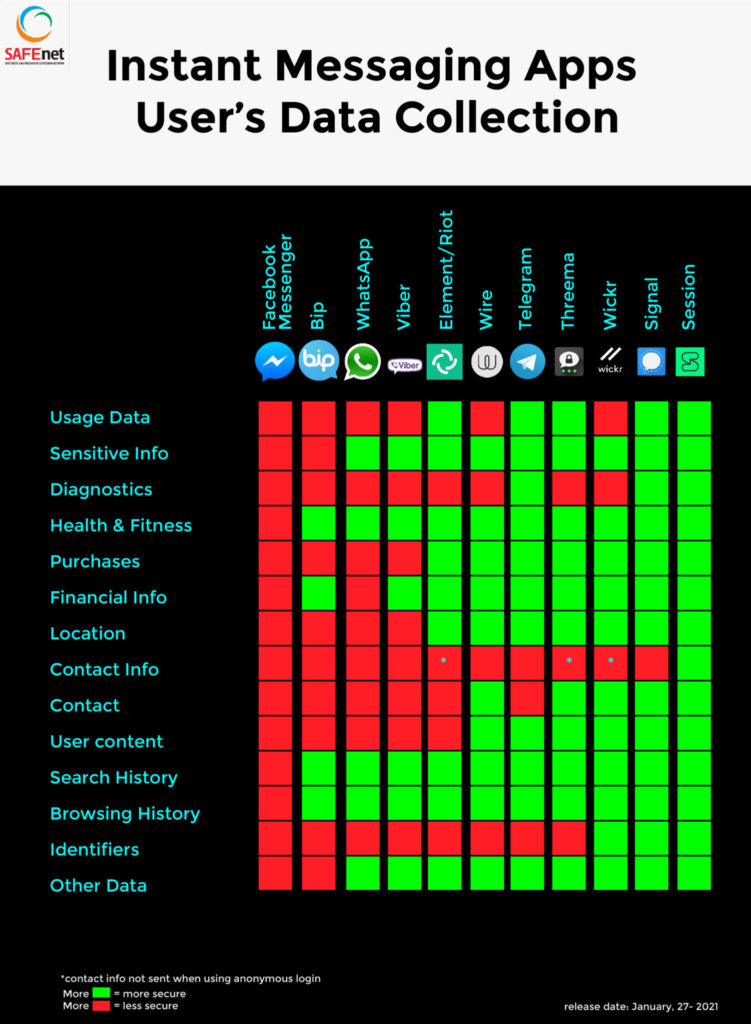
Graphic from SAFEnet, reposted with permission.
There are a growing number of messaging applications available to us, but many of these are not transparent in the amount of user data they collect and the lack of privacy measures in place to secure our conversations. Facebook, for example, is implementing changes that will force the users of WhatsApp, one of the most widely used messaging apps, to accept its new controversial privacy policy that will allow the harvesting of users’ metadata for marketing purposes.
Speaking up against the implementation of this policy are 28 organisations from around the world, among them Coconet members Southeast Asia Freedom of Expression Network (SAFEnet), Foundation for Media Alternatives, and EngageMedia. The campaign also involves the urging of authorities to defend the rights of WhatsApp users. For additional reading, we also recommend checking out this article from Session discussing the app’s new privacy policy and why you should “steer clear” of the app if privacy is a concern for you.
Even before the start of the campaign, SAFEnet had already published a “Guide to Choosing a Privacy-Protecting Conversation App” to help Indonesians better understand which messaging apps protect their users the most.
The guide ranks the apps, from WhatsApp to Signal, using seven ideal criteria a safe communication app should have. For an app to claim that it is secure, it must be:
- Freedom from dependence on large technology companies
- Fully encrypted (E2EE)
- Multi-platform support
- Multi-mode communication (voice, text, video, and more)
- Additional features that help users.
Download the full guide in Bahasa Indonesia from here. Read the article in Bahasa Indonesia here.
Ellen Kusuma is a member of SAFEnet’s Security and Safety Division.
The views expressed in this post do not necessarily reflect the views of the Coconet community, EngageMedia, APC, or their funders. Copyright of the article is held by the author(s) of each article. Check out our Contribution Guidelines for more information. Want to translate this piece to a different language? Contact us via this form. This publication is licensed with Creative Commons Attribution-NonCommercial-NoDerivatives 4.0 International.
